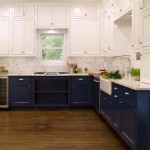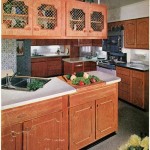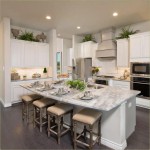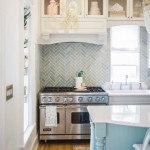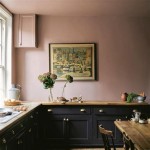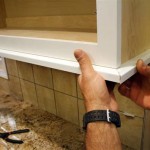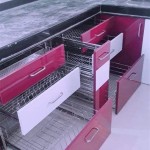Kitchen Wall Cabinet Shelf: Optimizing Storage and Enhancing Aesthetics
Kitchen wall cabinet shelves represent a crucial element in kitchen design, serving as both functional storage solutions and contributing to the overall aesthetic appeal of the space. These shelves, typically enclosed within wall-mounted cabinets, provide organized storage for a diverse range of kitchen items, from food supplies and cookware to glassware and appliances. Understanding the different types, materials, configurations, and design considerations associated with kitchen wall cabinet shelves is essential for creating an efficient and visually pleasing kitchen environment.
The fundamental purpose of a kitchen wall cabinet shelf is to maximize storage capacity within a limited footprint. By utilizing vertical space, these shelves allow homeowners to store more items without sacrificing valuable counter space or floor area. Proper shelf design and organization can significantly improve kitchen workflow, making it easier to access frequently used items and maintain a clutter-free environment. Furthermore, the visual integration of cabinet shelves into the overall kitchen design contributes to a cohesive and harmonious aesthetic.
Types of Kitchen Wall Cabinet Shelves
Kitchen wall cabinet shelves are available in various types, each offering distinct advantages in terms of functionality and aesthetics. The selection of the appropriate type depends on factors such as the cabinet size, the items to be stored, and the desired design style.
Fixed Shelves: These are the most common and basic type of kitchen wall cabinet shelf. They are permanently attached to the cabinet walls and cannot be adjusted. Fixed shelves offer stability and are suitable for storing heavier items. However, their lack of adjustability may limit flexibility in adapting to changing storage needs.
Adjustable Shelves: As the name suggests, adjustable shelves can be moved up or down within the cabinet to accommodate items of varying heights. This adjustability provides greater flexibility in organizing the cabinet space and optimizing storage efficiency. Adjustable shelves are typically supported by shelf pins or clips that fit into pre-drilled holes in the cabinet walls.
Pull-Out Shelves: These shelves slide out from the cabinet, allowing for easier access to items stored at the back. Pull-out shelves are particularly useful for deep cabinets where reaching items at the back can be difficult. They are often used for storing pots, pans, and other bulky items.
Glass Shelves: Glass shelves offer a visually appealing alternative to solid shelves. They allow light to pass through, making the cabinet interior brighter and creating a sense of spaciousness. Glass shelves are often used in cabinets displaying glassware or decorative items. However, they may not be as strong as solid shelves and should be used with caution when storing heavy items.
Corner Shelves: Corner shelves are designed to maximize storage space in corner cabinets, which are often difficult to access. These shelves may be fixed, adjustable, or rotating, providing efficient storage solutions for awkward corner spaces.
Materials Used in Kitchen Wall Cabinet Shelves
The choice of material for kitchen wall cabinet shelves significantly impacts their durability, appearance, and cost. Common materials include wood, particleboard, plywood, metal, and glass. Each material possesses unique characteristics that make it suitable for different applications.
Wood: Solid wood offers a classic and durable option for kitchen wall cabinet shelves. It is available in various species, each with its own grain pattern and color. Wood shelves can be stained or painted to match the overall kitchen design. However, solid wood can be more expensive than other materials and may be susceptible to warping or cracking in humid environments.
Particleboard: Particleboard is a composite material made from wood chips and resin. It is a cost-effective alternative to solid wood and is often used in lower-end cabinets. Particleboard shelves are generally covered with a laminate or veneer to provide a smooth and durable surface. However, particleboard is not as strong as solid wood and is more susceptible to water damage.
Plywood: Plywood is another composite material made from layers of wood veneer glued together. It is stronger and more durable than particleboard and is less susceptible to warping. Plywood shelves are often used in mid-range cabinets and can be stained or painted.
Metal: Metal shelves offer a modern and industrial look. They are typically made from steel or aluminum and are often coated with a powder-coated finish for durability. Metal shelves are strong and easy to clean, making them suitable for storing heavy items or items that may spill. However, they can be more expensive than wood or particleboard shelves.
Glass: Glass shelves are typically made from tempered glass, which is stronger and more resistant to breakage than regular glass. Glass shelves offer a clean and elegant look and are often used in cabinets displaying glassware or decorative items. However, they may not be as strong as solid shelves and should be used with caution when storing heavy items.
Design Considerations for Kitchen Wall Cabinet Shelves
Designing kitchen wall cabinet shelves involves careful consideration of various factors, including shelf depth, spacing, weight capacity, and aesthetic integration. Optimizing these design elements ensures both functionality and visual harmony within the kitchen space.
Shelf Depth: The depth of the shelves should be appropriate for the items to be stored. Deeper shelves can accommodate larger items, but they may also make it more difficult to reach items at the back. Shallower shelves are easier to organize and can prevent items from getting lost in the back of the cabinet.
Shelf Spacing: The vertical spacing between shelves should be determined by the height of the items to be stored. Adjustable shelves provide the flexibility to customize the spacing to accommodate different items. It is important to leave adequate space above and below items to allow for easy removal and placement.
Weight Capacity: The weight capacity of the shelves should be sufficient to support the items to be stored. Solid wood and metal shelves typically have higher weight capacities than particleboard or glass shelves. It is important to distribute the weight evenly across the shelf to prevent sagging or damage.
Aesthetic Integration: The design of the shelves should complement the overall kitchen design. The material, color, and style of the shelves should be consistent with the cabinets and other kitchen elements. Glass shelves can add a touch of elegance, while open shelves can create a more casual and inviting atmosphere.
Lighting: Incorporating lighting into kitchen wall cabinets can enhance visibility and create a more visually appealing space. Under-cabinet lighting can illuminate the countertop, while in-cabinet lighting can highlight the items stored on the shelves. LED lighting is a popular choice due to its energy efficiency and long lifespan.
Accessibility: Consider the accessibility of the shelves for all users. Lower shelves should be easily reachable for people of all heights. Pull-out shelves can improve access to items stored at the back of deep cabinets. Universal design principles can be incorporated to create a kitchen that is accessible and usable for people with disabilities.
Organization: Effective organization is crucial for maximizing the storage capacity of kitchen wall cabinets. Use shelf dividers, baskets, and containers to keep items organized and prevent them from becoming cluttered. Label shelves and containers to make it easier to find what you are looking for. Regularly declutter the cabinets to remove unwanted or unused items.
Proper planning and design of kitchen wall cabinet shelves are essential for creating an efficient, organized, and aesthetically pleasing kitchen space. By carefully considering the types of shelves, materials, and design considerations, homeowners can optimize storage capacity, improve workflow, and enhance the overall visual appeal of their kitchens.
The installation of kitchen wall cabinet shelves typically involves mounting the cabinets securely to the wall studs. Proper installation is crucial to ensure the stability and safety of the cabinets. It is generally recommended to hire a professional installer to ensure that the cabinets are installed correctly and according to building codes.
Maintenance of kitchen wall cabinet shelves is relatively simple. Regularly wipe down the shelves with a damp cloth to remove dust and spills. Avoid using harsh chemicals or abrasive cleaners, as they can damage the finish. Periodically inspect the shelves for any signs of damage, such as cracks or sagging. Repair any damage promptly to prevent further deterioration.
In conclusion, kitchen wall cabinet shelves are an integral component of a well-designed kitchen. By understanding the various aspects of shelf design and implementation, homeowners can create a functional and visually appealing kitchen space that meets their individual storage needs and aesthetic preferences.

Hampton Bay Designer Series Melvern Assembled 36x30x12 In Wall Open Shelf Kitchen Cabinet White Wos3630 Mlwh

Luxenhome Farmhouse Brown Wood Storage Sliding 2 Door Wall Cabinet

Rev A Shelf 36 Inch Pull Down

S71 Solid Wood Handmade Shelving Unit Wall Mounted Kitchen Cabinet Traditional Tea Open

Wall Cabinet Shelf Pullout 9 Cab 36 H

Wall Cabinet Pull Down Shelving System Shelves That Slide

Kitchen Floating Shelves Shelf With Brackets Bathroom Wood Chunky Thin

Rev A Shelf Chrome 36 Quot Kitchen Pull Down Wall Cabinet System 5pd 36crn The Home Depot

Upper Wall Cabinet Pullout Filler

5 Smart Wall Storage Ideas To Upgrade Your Kitchen
Related Posts

